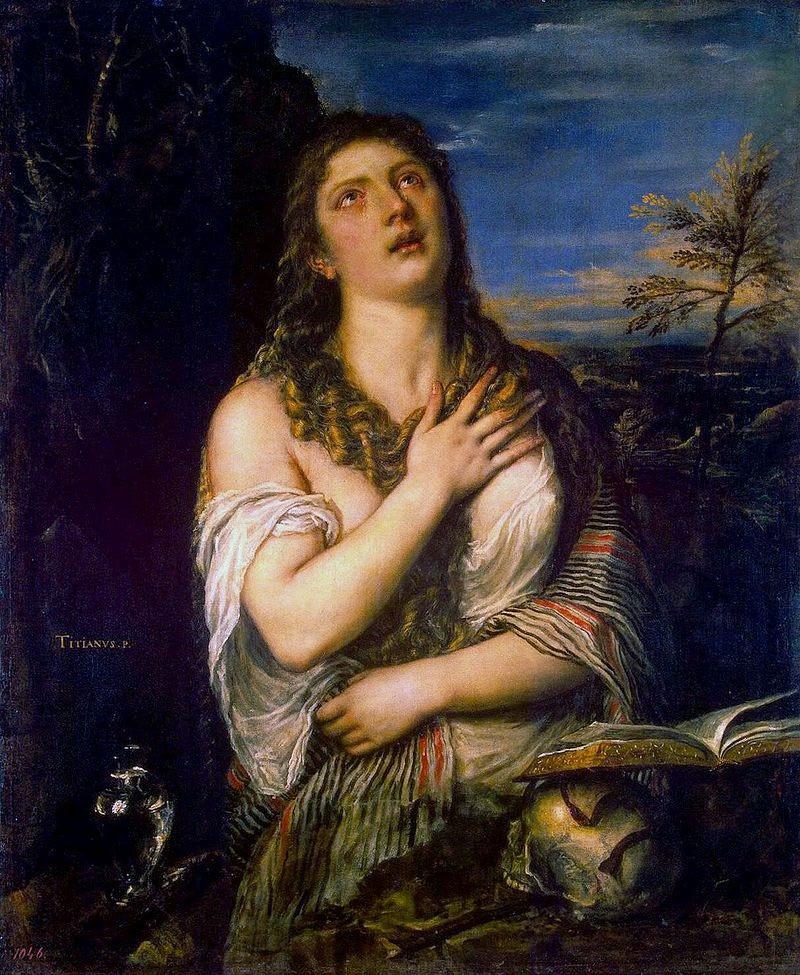
4 minute read
Saints of the Holy Land & Rome
Presented by Al McCauley
Saint Helen
Advertisement
c. 247-330 A.D.
Feast Day: August 18
Vision of St. Helena

Paolo
Helen was the mother of Constantine – the first Roman Emperor to embrace Christianity. Constantine called for a council at Nicaea to help define what we believe. From this meeting, our Church’s first creed was produced. He also supported the building of Christian churches.
Like her son, Helen felt called to embrace Christianity, and spent many hours in prayer. Her interest in Christianity lead to a strong desire to visit the places where Jesus lived and died. She wanted to find those places and objects that were sacred to Christians and to preserve them for later generations.
On one such pilgrimage, it is said that she had a dream which detailed where sacred items could be found. Following this vision, Helen found the true cross on which Jesus was executed, and she commissioned the building of the Church of the Nativity Bethlehem and the Church of the Holy Sepulcher in Jerusalem. Since her time, millions of believers from around the world have visited these holy sites.
Helen spent the rest of her life living humbly in the Holy Lands, supporting Christians there and giving aid to the needy. She would often meet pilgrims who had traveled great distances to visit the shrines that she had built, showing them respect and hospitality; and the renowned historian Eusebius wrote of Helen, “Especially abundant were the gifts she bestowed on the naked and unprotected poor.”
How have the pilgrimage sites founded by St. Helen been a source of inspiration and faith for travelers over the centuries?
How do you show and share your faith with family members?
Notice that St. Helen appears to be leaning on the cross in the painting. When do you most lean on the cross for support and spiritual guidance? In what circumstances of your life do you need to do this more often?
SAINT CATHERINE of ALEXANDRIA

c. 287-305 A.D.
Feast Day: November 25 Saint
Caravaggio (1598)
Catherine was the well-educated daughter of the pagan queen of Egypt and became a Christian upon hearing the preaching of a holy hermit, and after receiving visions of both Jesus and Mary.
This angered the Roman Emperor, Maxentius, who had come to northern Africa to wipe out the growing influence of Christianity there.
Because she was both nobility and renowned for her intelligence, the Emperor sent fifty of his most learned men to hold a trial against Catherine. She was so persuasive in her arguments for Christ, however, that all of the Emperor’s philosophers converted!
In a rage, Maxentius ordered that Catherine be killed immediately on a spiked wheel. But, when Catherine touched the wheel, it splintered and broke apart. So, he had her beheaded.
It was said that angels came and buried her body at the foot of Mt. Sinai. A Christian monastery was built over her body in the sixth century and is still operational today.
Catherine was one of three Saints identified by Joan of Arc (14121431) as appearing to her and providing comfort and counsel.
Catherine is also counted among the legendary Fourteen Holy Helpers – powerful intercessors who have been invoked by the faithful against various diseases or dilemmas for centuries.
How are Catholics persecuted today? How can we help to change the hearts and minds of those who dislike the Church?
The word martyr means witness. In what ways can you “witness” Christ in your life without dying bodily?
Saint Jerome

c. 347-420 A.D.
Feast Day: September 30
Caravaggio (1606)
St. Jerome is mostly remembered for two things: his irascible temperament and his translation of the Sacred Scriptures. It is perhaps because of his cranky character that his gift of a vernacular Bible was made possible!
Jerome was a fearless critic of immorality and, although quick to anger at injustice and sin, he was tougher on himself than others. His somewhat pugnacious personality no doubt helped guide his life’s most important work.
A brilliant scholar, Jerome was asked by Pope Damasus I to undertake a herculean task: translate the Old and New Testaments into the common language of the Church and society – Latin. It took Jerome and a team of helpers over a decade to complete the work, which is called the Vulgate (from the Latin, meaning “common”).
Jerome’s great love of Sacred Scriptures guided the process, and he is often quoted as having said, “Ignorance of Scriptures is ignorance of Christ.”
Jerome spent his final years in the deserts of the Holy Land living an austere life of prayer as a hermit. He eventually settled in Bethlehem, living in the cave where Christ was believed to have been born. After dying, his remains were taken to Rome and now reside in the Basilica of St. Mary Major.
How can your specific personality traits and talents be used to help others know Jesus?
What role does the Bible play in your faith life?
As Catholics, why is it important to remember our death?
Saint Mary Magdalene

First Century A.D.
Feast Day: July 22
Mary Magdalene is arguably the most misunderstood and misrepresented of all Saints!
She stood by Jesus during his torment, watched him die on the cross, and then was gifted by God to be the first witness of the risen Christ. Because Mary was sent to relate the news of Jesus’ Resurrection first, the Church has given her the title “Apostle to the Apostles.” As the primary witness and messenger of the Resurrection, Mary became an important and well-respected disciple after Jesus’ ascension into Heaven. Unfortunately, most Christians today think of Mary more as a repentant prostitute that a distinguished herald.
Contrary to long-held thought, nothing in the New Testament indicates that Mary Magdalene was a prostitute! This errant view originated with an unfortunate misunderstanding by Pope St. Gregory I (r. 590-604) and became indelibly stamped in the western psyche due to the repeated depictions of Mary as a fallen woman by scores of artists over the centuries.
In 1969, the Roman Catholic Church officially declared that there was no scriptural evidence to support this undeserved reputation which obscures her important role as the “Apostle to the Apostles.”
Regrettably, the damage to Mary’s status has persisted, and many still think of her as a sinful woman. It is incumbent upon all Christians to know the truth of Mary’s life and rightly honor her as not only a vital member of Jesus’ closest followers, but as a courageous evangelist.
Have you ever felt misunderstood or misrepresented? How can Mary Magdalene be a source of hope for you in this trial?
How can you be an “apostle” in your life, bringing the good news about Jesus to others in your words and actions?


